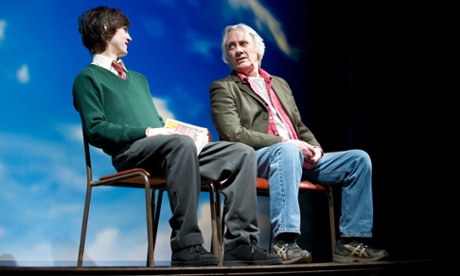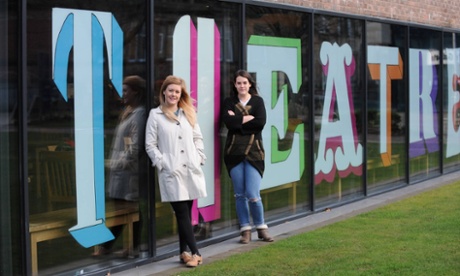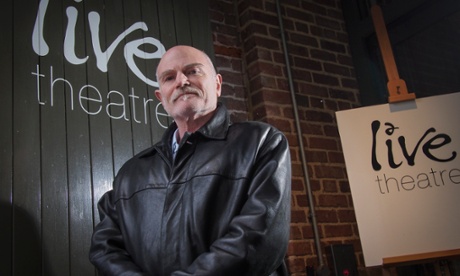On arrival I headed straight to the oval table towards the back of the main library room. The table is positioned in close proximity to a coffee machine, biscuit tin and 'the hatch', one of the features that distinguishes this building from other libraries. The hatch is run by volunteers who take it in turns to serve tea and coffee and biscuits. When the hatch is not manned, there is a tea and coffee machine and a biscuit tin that people can help themselves to.
As I sat at the table eating my packed lunch (yes, eating in the library is permitted!), I soon realised that there was no way that I could concentrate on reading the book that I had picked up as there were interesting conversations taking place around me.
Over the next few hours, a steady stream of people, ranging from a 3-year old to a 93-year old came and sat at the table. When asked what his favourite thing about the Lit and Phil is, Peter, the 3 year old boy, answered 'biscuits!' The importance of biscuits became clear as every person who came to sit at the table brought with them a packet of biscuits of some shape or form, and shared these. I was fortunate enough to meet Paul, the current Chair of the board of governors, who gave me a potted history of the Lit and Phil, from its conception in 1793 through the centuries to today.
Throughout our conversation other members sat at the table would interject and give their own anecdotes and offer other information to add to my understanding of what is obviously an important society to many people. There are not many places of this kind where one is given such a genuine and personal welcome, be offered food, partake in interesting conversation and be given a tour of the building by one of the members. This place is unique.
Over the past 15 years the society has experienced severe financial difficulties and at one point its existence was on tenterhooks. It is apparent that its survival relies on the passion and determination of the members and this drive ensures that the society retains its core functions - as a 'conversation club' and library.
The two functions exist simultaneously, although not always without tensions. In the most recent comments books, an abundance of glowingly positive remarks are punctuated by expressions of frustrations at the lack of silence in the library. Mike, (a current member) spoke about he regards the society as a social space, somewhere to talk about issues and ideas. In the 25 years that he has been a member, he has only borrowed 3 books. For him, the library aspect is not what attracts him, but the homely and comfortable atmosphere.
The society organises an impressive events programme, including musical events, lectures and art events. For example, in 2013 Dawn Felicia Knox, along with Irene Brown, Sally Madge, Iris Priest, Isabel Lima, Stephen Livingstone, Katy Cole and Benjamin Lawson were involved in Returning to the Philosophers’ Table, an integrated arts project that featured art exhibitions at the Lit & Phil and the Gallery of Wonder: Great North Museum along with cross-disciplinary collaborations and events.
For more information about Returning to the Philosophers’ Table, visit http://philosopherstable.org
I asked some of the members for their thoughts on some of the previous art exhibitions and installations that have taken place in the Lit and Phil. Positive comments were made in relation to Returning to the Philosophers’ Table. I get the impression the members I met were pretty open and are keen to attract new people. Tony mentioned that he would like to see a tandoori kitchen installed downstairs!
As much as I am excited about the space, I am also a little daunted by the challenge ahead. I feel, rightly or wrongly, a sense of responsibility to the members who regard the place as home. The context is already so loaded and full, and the atmosphere is very unique, and I want to use this to its full potential. How I will do this is unknown...
Watch this space!
Over the next few hours, a steady stream of people, ranging from a 3-year old to a 93-year old came and sat at the table. When asked what his favourite thing about the Lit and Phil is, Peter, the 3 year old boy, answered 'biscuits!' The importance of biscuits became clear as every person who came to sit at the table brought with them a packet of biscuits of some shape or form, and shared these. I was fortunate enough to meet Paul, the current Chair of the board of governors, who gave me a potted history of the Lit and Phil, from its conception in 1793 through the centuries to today.
Throughout our conversation other members sat at the table would interject and give their own anecdotes and offer other information to add to my understanding of what is obviously an important society to many people. There are not many places of this kind where one is given such a genuine and personal welcome, be offered food, partake in interesting conversation and be given a tour of the building by one of the members. This place is unique.
Over the past 15 years the society has experienced severe financial difficulties and at one point its existence was on tenterhooks. It is apparent that its survival relies on the passion and determination of the members and this drive ensures that the society retains its core functions - as a 'conversation club' and library.
The two functions exist simultaneously, although not always without tensions. In the most recent comments books, an abundance of glowingly positive remarks are punctuated by expressions of frustrations at the lack of silence in the library. Mike, (a current member) spoke about he regards the society as a social space, somewhere to talk about issues and ideas. In the 25 years that he has been a member, he has only borrowed 3 books. For him, the library aspect is not what attracts him, but the homely and comfortable atmosphere.
The society organises an impressive events programme, including musical events, lectures and art events. For example, in 2013 Dawn Felicia Knox, along with Irene Brown, Sally Madge, Iris Priest, Isabel Lima, Stephen Livingstone, Katy Cole and Benjamin Lawson were involved in Returning to the Philosophers’ Table, an integrated arts project that featured art exhibitions at the Lit & Phil and the Gallery of Wonder: Great North Museum along with cross-disciplinary collaborations and events.
For more information about Returning to the Philosophers’ Table, visit http://philosopherstable.org
I asked some of the members for their thoughts on some of the previous art exhibitions and installations that have taken place in the Lit and Phil. Positive comments were made in relation to Returning to the Philosophers’ Table. I get the impression the members I met were pretty open and are keen to attract new people. Tony mentioned that he would like to see a tandoori kitchen installed downstairs!
As much as I am excited about the space, I am also a little daunted by the challenge ahead. I feel, rightly or wrongly, a sense of responsibility to the members who regard the place as home. The context is already so loaded and full, and the atmosphere is very unique, and I want to use this to its full potential. How I will do this is unknown...
Watch this space!





















































